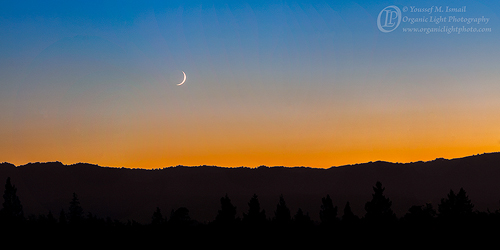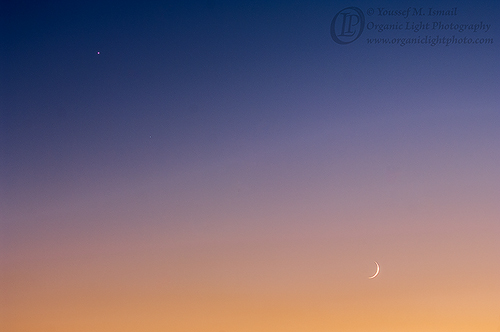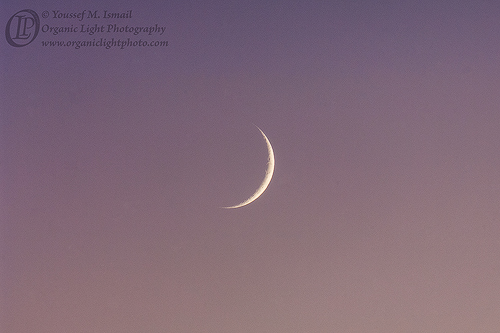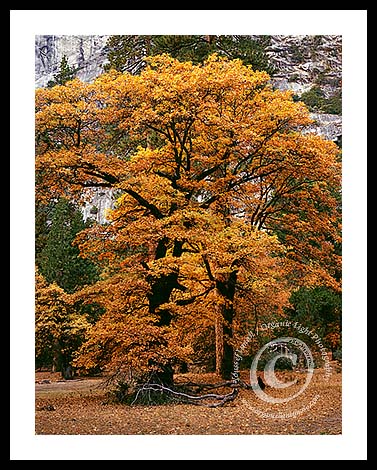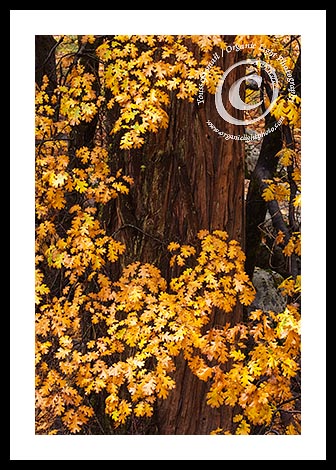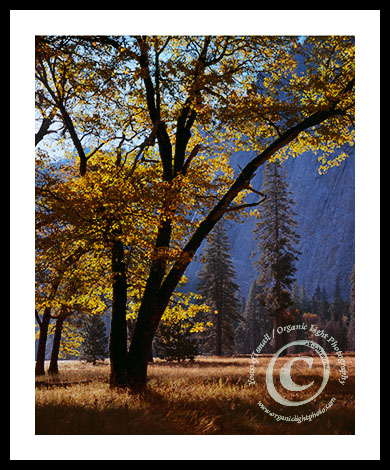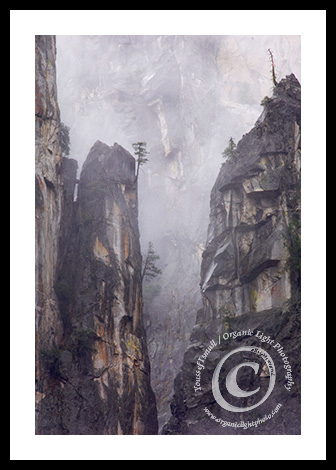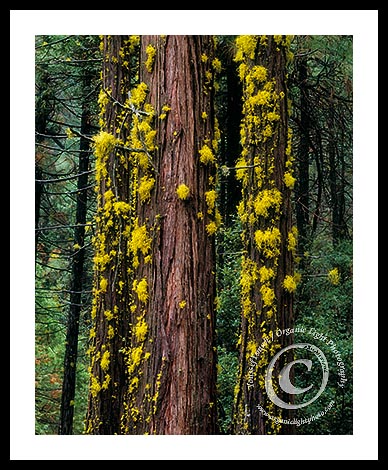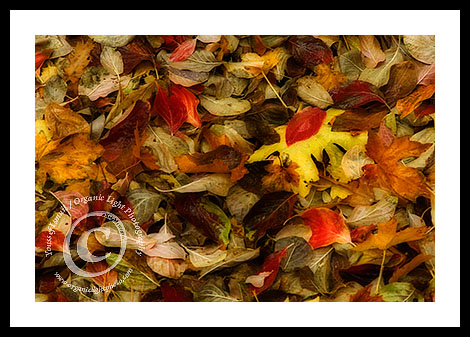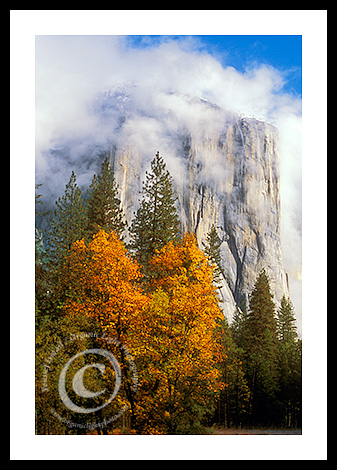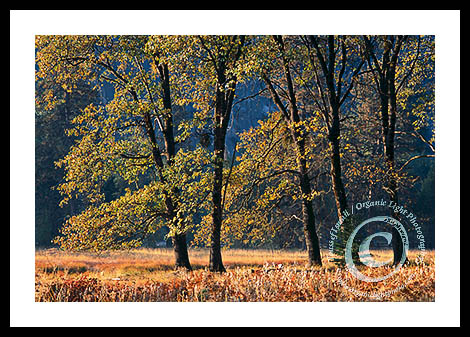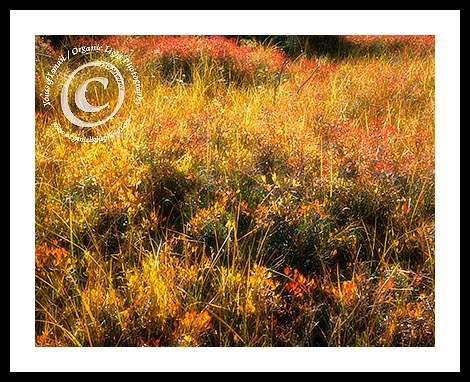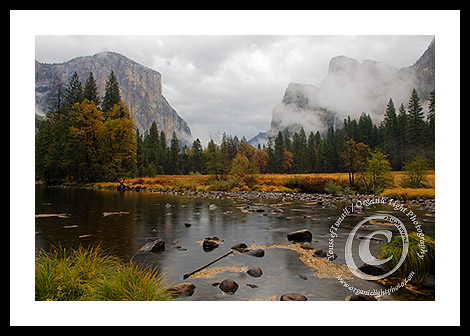Speaking In Silence
Each month this lone natural satellite of ours cycles through its phases always returning to the waxing crescent and appears in its performance after the sun has gone down. Each month, it seems, that its performance falls increasingly on an ever growing number of deaf ears.
Now you might be asking, how can we hear the moon when it is a visual experience? And to that I would reply, do we really hear with our ears? I had a teacher once who gave me advice. Be careful about what you do, people are listening to you with their eyes. In an age that is filled with imagery, actions speak much louder than words. And in an age where truth has been tipped on its head such that lies are believed to be truths and truth taken as lies, it is becoming harder to ascertain the truth. Nothing man touches anymore is free from the corruption of lies.
Twenty years ago I ventured out with a camera in my hand determined to vindicate the veracity of my tongue by photographing the new crescent moon as solid proof that I was seeing it. Along the way I became enamored by the natural world and have pointed my lens at much of. The world is vast and it has kept me occupied in preserving the moments it presented to me. In all that time, however, I never stopped photographing the moon. I rarely, if ever, shared the photos of the moon with many as I thought they would be of little interest; to simple for the sophistication of the modern mind, to boring for the eyes vexed by the virtual chicanery of our time. Yet in the past couple of years I have started sharing the photos of the new crescent moon and to my surprise they have been welcomed with a refreshing enthusiasm. Perhaps simple is best. After all was it not Albert Einstein who said “Make everything as simple as possible, but no simpler”?
These photos of the moon cannot be any simpler with regards to the subject and still call them photos of something. A sliver of reflected light set against a colorful post sunset sky. As simple as they may seem, they are a far cry from having nothing to say.
At times the color of the sky is vibrant while at other times quiet and tame. The color moves the eye up and down the frame touching upon all the emotions associated with the spectrum from passion to power to peace and sadness, stopping only for the pearly-white glow of the small sliver of light that interrupts the flow. The subject is always the same but placed in the specific context the photos take on many levels of complexity. At times I am treated with a varied sky mixed with silhouetted clouds giving the photo a sense of mystery or a dastardly ominous presence and the crescent provides a glimmer of hope that balances the image.
I also see the moon as a marker of time. Each day it waxes larger until it becomes full and rises as the sun is setting and then wanes away into a crescent once more before it vanishes for day or two as it interludes with the sun hidden to our naked eyes. Its mansions in the sky remind me of the passing of time, or more starkly the running out of time. I only have a fixed amount to time in this life as do each of you. Once my time, and your time for that matter, runs out, we cease to exist here. Our ability to do something to effect change for the better comes to an end. So it reminds me each month to get busy and not waste the precious amount I have left.
Rarer still, are those times when the moon is hanging in the sky next to other celestial travelers, such as Venus or Mars or other orbs of light that reach out from deep in the galaxy or from other galaxies that are light years away. These little sparks of light not only grace the image with another point of light to aid in giving the eye a place to rest but also giving us a glimpse into the past. For many of the stars that do show up, are so far away that their light reaching us now left those stars long before we ever existed and in some cases their light is as old as the universe itself. For us, looking up at the sky, these celestial beacons all appear the same distance away. Light reflected from the moon however, reaches us in a little over 1 second. From Venus, a regular companion of the Moon in the sunset sky, its reflected light reaches us in as little as 2 minutes or as long as 14 minutes depending on where it is in its orbit around the sun relative to where we are in our orbit. Light from the sun, which on average is 93 million miles away, reaches us in just over 8 minutes. The next closest star to us is Proxmia Cantauri which is 4.3 light years away, meaning light from that start reaching us tonight left that star 4.3 years ago. The additional star that showed up on the evening that “Trio” was made, Spica in the constellation Virgo, is the 15th brightest star in the sky and the light that left that star did so 250 years ago! That was before anyone of us reading this article right now was even born! And the faintest object that we can see by the naked eye under a sufficiently dark sky is the Triangulum Galaxy M33 which is 3 million light years away from Earth. Its light seen tonight left it 3 million years ago! When we look up at sky we are seeing the ancient past.
Then there are those times when I decide to not only include the moon’s neighbors in the sky, but also Terra Firma. I will place it as an anchor at the bottom of the frame, silhouetted against the colorful sky. Most times I will wait until the moon is close to the horizon allowing the diffraction effects of the atmosphere to play its magic in making the moon appear bigger than it really is. And yet, by doing so I emphasize the size of the moon to indicate that it is much more important than we esteem it to be. Without the moon, the tides on the oceans would not exist as they do. The variation of high tide and low tide would not be present. And although the sun and wind would still send waves onto our shores they would be tame compared to what we now see, and coastlines for the most part would remain static, much like those of any lake. By virtue of the orbiting moon, we have dynamic oceanic coastlines that team with a variety of unique life accustomed to the cyclic nature of the rising and dropping tides.
Further yet, the moon was the first means of marking time beyond a day, ushering in calendars into the human civilization that were used to mark sacred days as well as the counting of years. Through the discovery and understanding of the cyclic nature of the moon, the cyclic nature of the rising and setting locations of the sun and stars soon followed allowing our ancestors to learn about the changing and cyclic seasons – giving rise to the understanding of agriculture of knowing when and when not to plant. The relationship of the Moon and Mother Earth is one that runs very deep and the two are intimately connected through an invisible force now known as gravity. It was the sight of the moon up in the sky and simultaneously seeing an apple fall from a tree that prompted Sir Isaac Newton to question – if an apple falls from a tree to the ground, why does the moon up in the sky not fall to earth as well? It led him to the rationalization of what we now call Newton’s Laws of Motion which describe the very nature of the motion of our world and those objects in it as well as the motion of heavenly bodies. Through Newtonian mechanics, the motion of objects described by Newton’s Laws of Motion, humans have walked on the surface of the very moon that prompted Sir Isaac Newton to formulate those laws some half a millennium ago. And yet, to this day, we still do not know what gravity really is.
Yes these photos of the new crescent moon are simple, but by no means are they empty. The prophet Muhammad, peace be upon him, spoke succinctly with few words but with much meaning. His blessed face was described to shine more than the full moon on a dark night. He changed the world for the better and left for us in the moon a tradition of going out each month in search of it. Each month the moon appears is a reminder of the character building lessons that the Prophet Muhammad, peace be upon him, came to teach us. I see the moon as his final lesson. If he spoke succinctly in his lifetime he is now speaking to us in silence – through the silence of the moon. These photos of the moon as simple as they may be, speak volumes, without even saying a word.
Till next time, peace.
 Loading Image...
Loading Image...